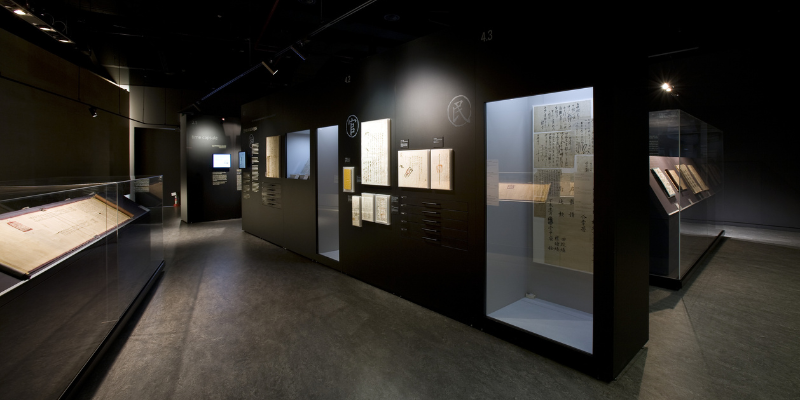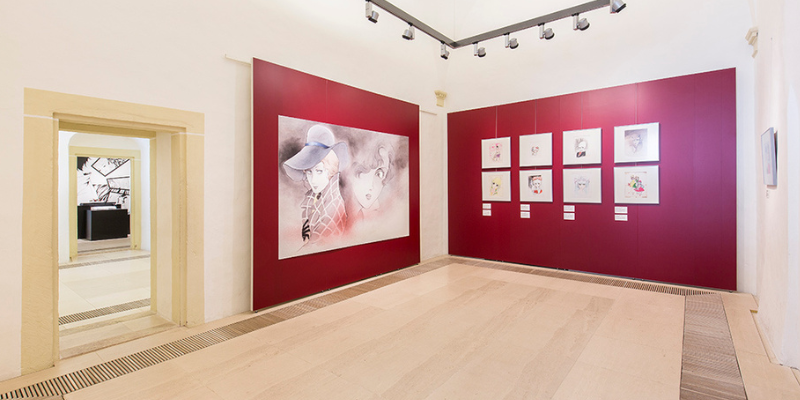8 Types of Museum Wall Configurations You Can Create with Mila-wall
As a museum exhibition designer or architect, you know how crucial the right layout is to creating impactful exhibitions. Whether you’re working with a permanent collection or designing a temporary exhibit, wall configurations can make all the difference in how visitors engage with the space. Having worked with many freestanding wall solutions, I can confidently say that Mila-wall’s modular system provides the unmatched flexibility essential for creating custom museum wall configurations that enhance the aesthetic and functionality of any space. With features like easy installation and limitless customizability, the benefits of Mila-wall are truly endless.
Let me walk you through eight different ways you can use Mila-wall, more specifically the 100 series elements, to craft the perfect layout for your museum exhibition.
Standard Configurations
The Mila-wall moveable wall system offers several basic wall configuration options, enabling you to create captivating exhibits immediately. Different wall heights and practical sets of 6 to 30 modules with all the necessary accessories are also available. Because the system is modular, it's easy to expand, so you can adapt and extend your exhibition space to meet your changing needs. Here are four basic museum wall configurations you can create with Mila-wall.
1. Straight Walls

Image source: MBA Worldwide - Sélestat Humanist Library
The simplest and most classic configuration is a straight wall. It offers a clean, continuous surface that works beautifully for large artworks, photographs, or even detailed text panels. If you’re looking for a way to maintain clear sightlines and guide visitors through your exhibit in an orderly fashion, this is a go-to option. Straight walls maximize linear display space without overwhelming the viewer, making these museum solutions a staple for most exhibition needs.
2. Corner Configurations

Image source: MBA Worldwide - Museum of Archaeology in Herne
Mainly structural, corners can also help you break up larger spaces into more intimate, focused areas. With Mila-wall moveable wall system, you can easily create 90-degree corners using two, three, or even four walls. This is an excellent option when you want to frame specific works of art or create smaller alcoves within a larger gallery. Many exhibit designers use corner configurations to create cozy, private viewing areas, offering visitors a more personal experience with each piece. The innovative design of Mila-wall means that no additional hardware is needed to create any corner configuration, making it incredibly easy to adapt your layout as needed.
3. Angled Walls

Image source: MBA Worldwide - The State Textile and Industrial Museum in Augsburg
If you’re aiming to add some visual interest to your space, angled walls could be the perfect solution. Mila-wall can be configured at 60, 120, and 135 degrees, allowing you to create dynamic, unconventional layouts. Rotating panels are an added bonus, giving you the flexibility to adjust the angles and reconfigure the walls to suit different exhibits. Angled walls are especially useful in exhibitions that require a sense of movement or interaction, as they naturally guide the visitors’ movement through the space.
4. Cube Configurations

Image source: MBA Worldwide - Museum of Contemporary Art in Belgrade
Cube configurations are basically blocks of walls with an interior void. These types of walls allow the encasement of art and artifacts, lighting, and interactive visual and audio elements. They also help make exhibitions stand out visually by allowing the creation of more imposing structures whose four surfaces can accommodate artworks. In their lower version, cube configurations can also serve as pedestals to showcase unique pieces of your exhibition.
Transform Your Exhibition Spaces
Achieve flexibility and elegance in your museum or gallery
displays using the innovative Mila-Wall® moveable wall systems.
Bespoke Configurations
The Mila-wall movable wall system offers additional museum wall configuration options that go far beyond traditional ones. Here are four additional options guaranteed to take your exhibition to the next level.
5. Curved Walls

Image source: MBA Worldwide - The State Textile and Industrial Museum in Augsburg
Curved walls offer a unique way to introduce flow and movement into your space. Mila-wall’s curved options allow you to break away from rigid lines, creating a more organic feel that can help guide visitor traffic or spotlight specific areas of your exhibition. I highly recommend this configuration if you want to soften the environment and create a more fluid experience for visitors, especially in spaces dedicated to sculptures or large installations.
6. Walls With Windows & Niches

Image source: MBA Worldwide - GPM Documentary Hall
Sometimes, you want to highlight certain pieces or create focal points without isolating them completely. That’s where windows and niches come in. By incorporating them into your wall configuration, you can frame individual works or objects inside your wall or display them as standalone pieces while maintaining visibility across the gallery. Windows and niches allow for interesting lighting possibilities and can create visual depth within a space. The versatility of Mila-wall can help you transform your exhibit into a more layered, engaging experience for visitors.
7. Walls With Doors
Incorporating doors into your museum wall configurations is a practical way to maintain flow between different zones of your exhibit. Mila-wall integrates doors seamlessly, making it easy to control access between rooms without interrupting the design. Doors are also an excellent way of creating restricted access to closed, self-contained rooms for a unique experience within your exhibit.
8. Only Walls

Image source: MBA Worldwide
Although Mila-wall panels are originally designed to act as stand-alone structures by adding corners, some exhibition designers like to attach them to the existing walls or ceiling of their space to play with volumes, add touches of color or unexpected elements, protect existing walls, better direct visitors, and so on. These walls normally rest on standard Mila-wall leveling feet and can be attached at the top using the method of your choice. For example, you could use a rail system and casters to fix and move your Mila-Wall walls along your space walls as your exhibitions change, which is especially practical for museums and galleries with frequently changing exhibitions or those that often host unique events.
Combining Multiple Wall Configurations for A Successful Exhibition
The versatility of Mila-wall offers countless possibilities for designing unique and impactful museum layouts. From simple straight walls to more complex cubes and curved configurations, these museum exhibit walls can help bring your vision to life. With options for windows, niches, pedestals, doors, and more, you can create spaces that are functional and visually striking. By understanding the strengths of each configuration, you can tailor your designs to reflect your artistic vision and meet the specific demands of your exhibits.
Whether you aim to foster intimate viewing experiences or dynamic, adaptable layouts, Mila-wall’s innovative museum walls offer a range of solutions to elevate your next project and enhance visitor interaction. Read our article on Mila-wall panel options to learn more about the features of the 100 Series, as well as the 160 and 840 series.
As an expert in modular and moveable walls, I can help you choose a wall system for museum exhibits that best suits your needs and budget. In addition to our top-quality Mila-wall museum walls, we offer other systems such as Scenario and beMatrix. Please contact me for a free consultation.
Main image source: MBA World - Museum of Archaeology in Herne

